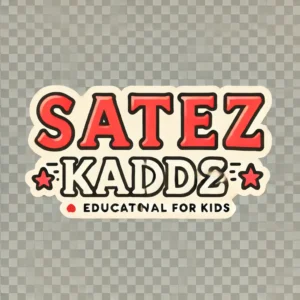Introduction
Chandni Chowk, located in Old Delhi, is one of the oldest and busiest markets in India and holds immense historical significance. Founded in the 17th century by the Mughal Emperor Shah Jahan, Chandni Chowk has stood the test of time, witnessing the rise and fall of empires and retaining its old-world charm amidst the hustle and bustle of modern Delhi. This article aims to delve deep into the history, culture, and attractions of Chandni Chowk, showcasing why it remains a must-visit destination for locals and tourists alike.
History of Chandni Chowk
Originally designed as a boulevard for the imperial processions of the Mughal royalty, Chandni Chowk was adorned with fountains and a canal that reflected moonlight, giving it the name Chandni Chowk, which translates to ‘Moonlight Square’. Over the centuries, it evolved into a bustling market, with traders and merchants from different parts of the country congregating here to sell their wares. Today, the street is lined with shops selling everything from spices and textiles to jewelry and electronics, making it a shopper’s paradise.
Places of Interest in Chandni Chowk
1. Red Fort (Lal Qila): Built by Shah Jahan, the Red Fort is a UNESCO World Heritage Site and a stunning example of Mughal architecture. The fort’s imposing red sandstone walls and intricate marble detailing are a sight to behold.
2. Jama Masjid: Located opposite the Red Fort, Jama Masjid is one of the largest mosques in India. Visitors can climb the minarets for a breathtaking view of Old Delhi.
3. Gurdwara Sis Ganj Sahib: A prominent Sikh place of worship, this gurdwara is a reminder of the harmonious coexistence of different faiths in India.
4. Paranthe Wali Gali: A narrow alley famous for its delicious parathas, a type of Indian flatbread, cooked in desi ghee (clarified butter). A paradise for food lovers.
5. Kinari Bazaar: Known for its wedding shopping, Kinari Bazaar is a treasure trove of colorful fabrics, decorative items, and traditional Indian attire.
Culture and Traditions
Chandni Chowk is not just a commercial hub but also a melting pot of cultures and traditions. The area is home to various temples, mosques, and gurdwaras, reflecting India’s religious diversity. The narrow lanes buzz with activity, from vendors selling street food to shoppers bargaining for the best deals. The festivals celebrated in Chandni Chowk, such as Diwali and Eid, bring the entire neighborhood to life, with lights, decorations, and joyous celebrations.
Shopping in Chandni Chowk
Chandni Chowk is a shopper’s paradise, offering a wide array of goods at reasonable prices. Visitors can shop for traditional Indian attire, such as sarees, lehengas, and sherwanis, as well as accessories like jewelry and handbags. The market is also famous for its spices, silverware, and electronic goods. Bargaining is a common practice here, so be prepared to haggle for the best deals.
Food and Delicacies
No visit to Chandni Chowk is complete without sampling its delectable street food. From chhole bhature and kachori to jalebi and lassi, the options are endless. Old Famous Jalebi Wala and Natraj Dahi Bhalle Wala are iconic eateries that have been serving authentic Indian treats for generations. Don’t miss the kachoris at Jain Coffee House or the chicken biryani at Aslam Chicken, both of which are local favorites.
Exploring Chandni Chowk
The best way to explore Chandni Chowk is on foot or by cycle rickshaw, allowing you to soak in the sights, sounds, and smells of this vibrant market. Wear comfortable shoes, as the narrow lanes can get crowded, especially on weekends. Start early in the morning to avoid the midday heat and experience the market coming to life. Don’t forget to carry a camera to capture the stunning architecture and colorful street scenes.
Safety Tips
While Chandni Chowk is a safe place for tourists, it’s essential to be cautious with your belongings and avoid wearing expensive jewelry that might attract unwanted attention. Stay hydrated and carry a small backpack for your essentials. If you’re unsure about navigating the area on your own, consider hiring a local guide who can show you around and provide valuable insights.
Conclusion
Chandni Chowk is more than just a market – it’s a living, breathing testament to Delhi’s rich history and vibrant culture. Whether you’re a history buff, a foodie, or a shopaholic, there’s something for everyone in this bustling neighborhood. So, the next time you’re in Delhi, make sure to carve out a day to explore the sights, sounds, and flavors of Chandni Chowk, and immerse yourself in the magic of this historic Delhi gem.
FAQs about Chandni Chowk
1. Is Chandni Chowk open on Sundays?
Yes, Chandni Chowk is open seven days a week, including Sundays. However, it tends to get more crowded on weekends.
2. What is the best time to visit Chandni Chowk?
The best time to visit Chandni Chowk is early in the morning to avoid the crowds and experience the market waking up.
3. Are there any parking facilities near Chandni Chowk?
Parking in Chandni Chowk can be challenging due to limited space. It’s advisable to use public transportation or hire a cab to reach the area.
4. Can I try street food in Chandni Chowk if I have dietary restrictions?
Yes, there are plenty of options for vegetarian and vegan street food in Chandni Chowk. Just inform the vendor about your dietary preferences.
5. Are there any guided tours available for Chandni Chowk?
Yes, there are several tour operators that offer guided walking tours of Chandni Chowk, providing valuable insights into its history and culture.












